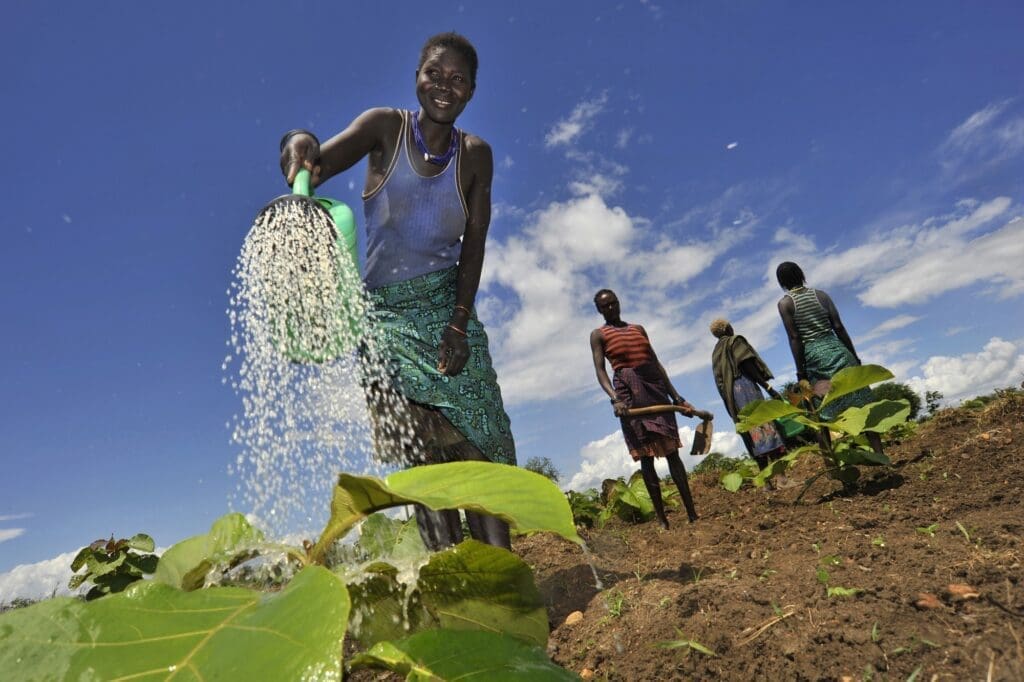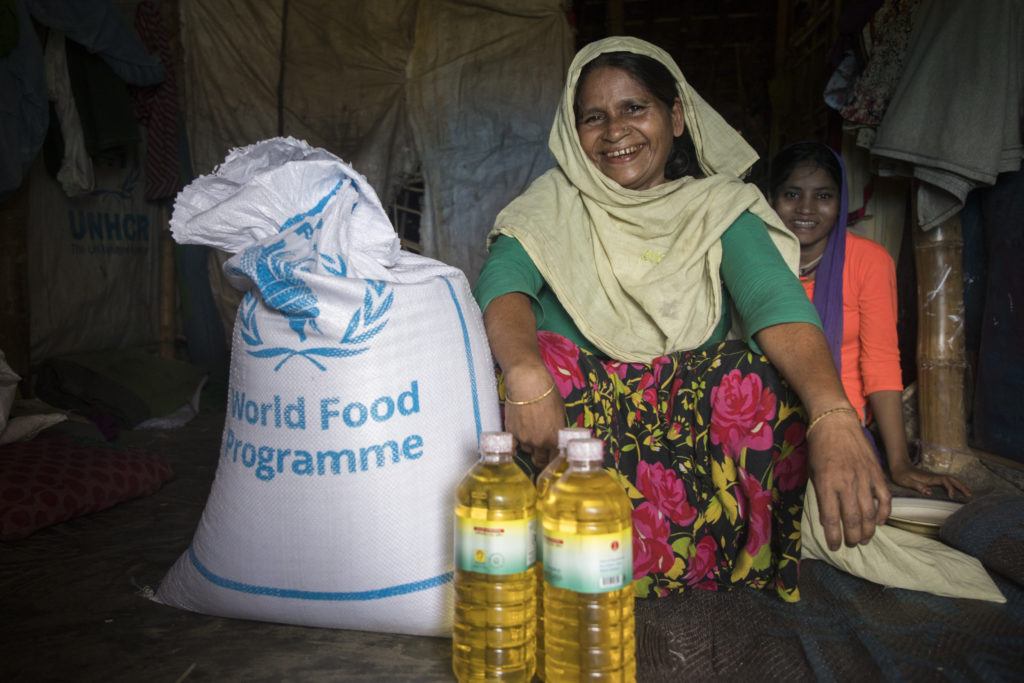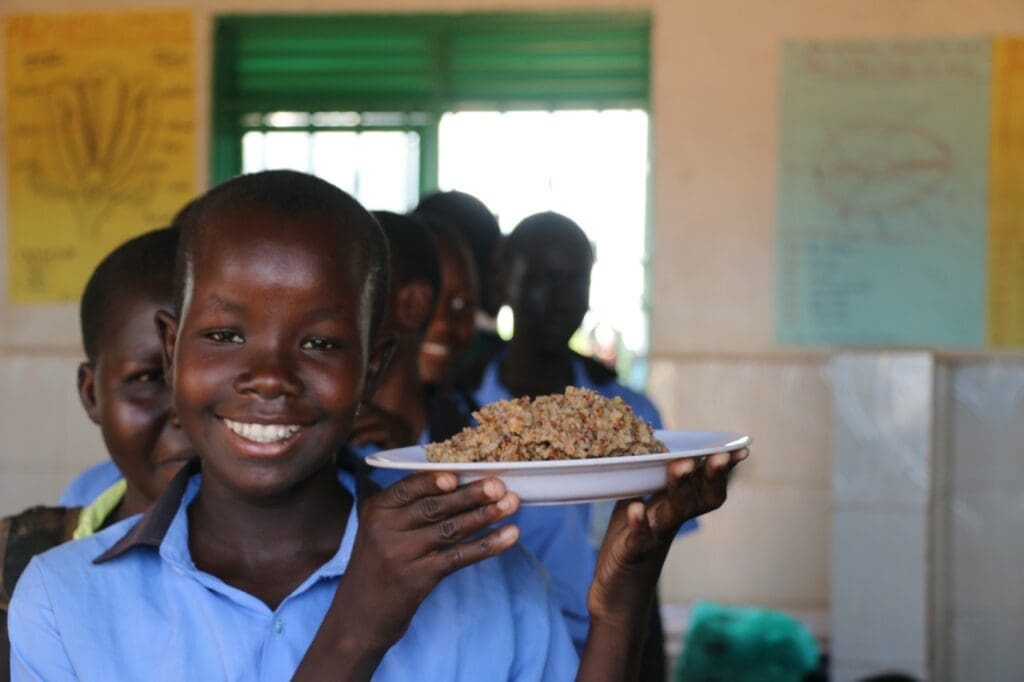How the U.S. Farm Bill Reaches Far Beyond U.S. Farms

The U.S. has a long legacy of showing its commitment to ending global hunger. The latest Farm Bill—which passed both chambers of Congress in December 2018—is one such commitment. Because of its name, the Farm Bill is often assumed to be a bill for American farmers (and it is), but it also has wide-reaching significance for other Americans and the international humanitarian community.
Let’s start with the basics:
What is the Farm Bill?
Approximately every five years, Congress passes a new Farm Bill, which includes a range of food and agricultural policies, like production, conservation, nutrition and international food assistance. It was first developed during the Great Depression to help farmers who were struggling with excess crop supply. Today it’s a bipartisan effort to benefit all Americans by ensuring low-cost access to food and supporting farmers and ranchers. The result is a win-win for U.S. farmers and hungry people abroad. By creating a supply line for the bounty of American crops locally, the Farm Bill ushers food to those who need it most globally.
What’s the connection between the Farm Bill and World Food Programme?
The Farm Bill is a critical piece of legislation that helps the World Food Programme (WFP) reach tens of millions of people each year across more than 80 countries in both emergency and non-emergency settings. The Farm Bill authorizes several critical programs related to this work, mainly the Food for Peace and McGovern-Dole Food for Education programs. Through these programs, WFP receives U.S. agricultural commodities, like rice, corn, wheat and soy beans, that it distributes to vulnerable people in need. From families suffering from conflict and economic distress in Yemen to children receiving school meals in countries like Nepal, Ethiopia and Haiti, the Farm Bill has a direct effect on hungry people worldwide. This and past Farm Bills have also increased the flexibility of food assistance in a number of ways, including by allowing some cash payments, pre-positioning of commodities, and allowing the use of regionally and locally procured food, which helps to create and enhance local markets.
In short, the Farm Bill translates American food production into lifesaving food assistance.

WFP/Saikat Mojumder
What’s different about this year’s Farm Bill?
Several new provisions have the potential to enhance WFP’s and other humanitarian partners’ ability to deliver assistance. Here are three key provisions:
1. USDA technical assistance for safety nets
This provision authorizes the U.S. Department of Agriculture (USDA) to provide technical assistance to developing countries as they work toward creating their own safety net systems. The USDA contains multiple agencies that have expertise in creating and maintaining safety net systems here in the U.S., like WIC (Women, Infants and Children nutrition program) and SNAP (Supplemental Nutrition Assistance Program), making them well-positioned for this role.
Improving delivery of commodities for the McGovern-Dole Food for Education Program
The 2018 Farm Bill directs the USDA to consider the timing of the school year when delivering commodities overseas. Ensuring that food reaches its international destinations during the most appropriate times of the year means that children will be less likely to skip school due to hunger and that resources will arrive when they are able to be distributed. An estimated 40 million people worldwide have received benefits since the inception of the program in 2003.

WFP/George Fominyen
3. McGovern-Dole graduation assistance
When a region becomes self-sufficient or no longer requires WFP assistance, it has “graduated” from the program. Local and Regional Procurement (LRP) of commodities has hastened the graduation of school meals programs to local government control, most recently in Kenya in 2018. The Senate language allows 10 percent of McGovern-Dole funds to be used for LRP. The Farm Bill also provides some flexibility to the USDA to extend the length of a McGovern-Dole project in countries that may need a little more time to achieve graduation.
The rise in conflict and catastrophic weather events around the world has dramatically increased the number of displaced people who rely on international assistance. The consequences of such widespread hunger increasingly threaten the U.S.’s own economic and security interests. Through the Farm Bill, America has been able to share its generosity for decades with people who need it most, an approach that has helped many countries develop into trading partners and donors within the international aid community. With each Farm Bill reauthorization, we have the opportunity to continue and improve upon this legacy of good work. We are heartened to see that the 2018 version is no exception.
Want to know what kinds of food WFP delivers? See them all here.




